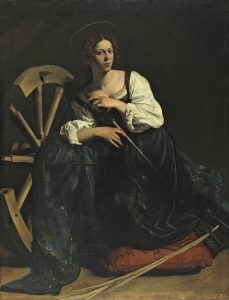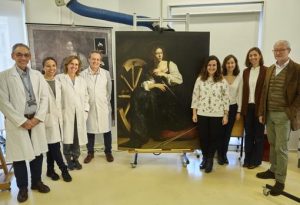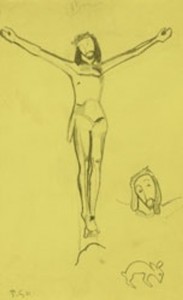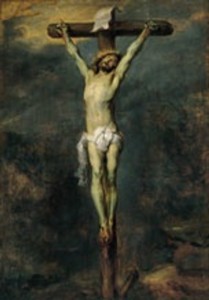Posts Tagged ‘Spain’
Sunday, October 28th, 2018
|
The Thyssen-Bornemisza Art Collection in Madrid continues to qualify ever more as a misguided cultural and financial ‘investment’ for the State of Spain.
Every day that passes, the art becomes more of a tourist attraction and less of a cultural statement, with a corresponding reduction in quality and authenticity.
Meanwhile treasury budgets have sored, fundraising activities become ever more ambitious and competitive, while the original owners, on the other hand, continue to exploit tax advantages inherent in the business of art collecting.
The Thyssen-Bornemisza collection has always been at the forefront of such mirages, ever since, in 1993, the Thyssen family sold half of Heini Thyssen’s highly questionable collection to the Spanish state for what the gullible Spanish public were convinced was a bargain price of some $600 million.
By now they must have begun to realise that the purchase price and cost of housing the museum was only the tip of the iceberg. For then you have to constantly invest more money in such necessities as staff, insurance, the cost of mounting one-off exhibitions, whose purpose is to encourage the public to revisit and, finally, the black art of restoration.
The latter being, of course, a contradiction in terms, for the more paint that is added to the surface, the less of the original work can legitimately be attributed to the artist in question. This is particularly relevant in the case of the Thyssen-Bornemisza Collection, which has often been accused of already suffering from over-restoration.
But as the restorers are the same people as those who advise on how much restoration is needed, it rapidly becomes an ever increasing financial burden, to the point where the Thyssen-Bornemisza National Museum has even had to resort to crowd funding and sponsorship to raise the finance needed to undertake such activities!
The latest example of this artistic vandalism is Saint Catherine of Alexandria by Caravaggio, originally commissioned by Cardinal Francesco Maria del Monte, which, according to the Thyssen-Bornemiza Museum’s restoration ‘team’, had already suffered from ‘aggressive’ restoration at some unspecified earlier point in time.
Ironically, considering the rumours surrounding Heini’s widow Tita Thyssen-Bornemisza’s colourful past history, the model for the picture was anything but saintly and was in fact Fillide Melandroni, a leading courtesan of the time.
Originally attributed to Orazio Gentileschi, the painting was ‘re-attributed’ to Caravaggio when scholars began to realise that they could make more money from confirming rather than denying the authenticity of art.
For this claim to be accepted by other ‘scholars’, it was also necessary to re-establish the status of a remarkably similar work, owned by the Prado and deposited in the church Iglesia de los Jeronimos, as being a mere ‘copy’.
There can now be little doubt that like many similar national institutions, the Thyssen-Bornemisza National Museum has become, as I warned them it would, more of a financial tread-mill than a cultural asset.
Fortunately, due to the fact that the Spanish agreed to sign a contract that prevents them from ever selling or disposing of any of the works that make up the Thyssen-Bornemisza Collection, the value of the works is somewhat academic.
Thus they might be best advised to get rid of their costly restoration team and follow the example of my late mother, who used to add sparkle to our artistic family treasures by giving them an annual wipe with a diluted mixture of toilet cleaner!
see this article by Natividad Pulido in the Spanish ABC newspaper of 21.10.2018:
https://www.abc.es/cultura/arte/abci-retrato-cortesana-como-santa-paso-manos-cardenales-201810210128_noticia.html |
 CARAVAGGIO (Michelangelo Merisi) Saint Catherine of Alexandria, ca. 1598 (photo copyright Museo Nacional Thyssen-Bornemisza, Madrid)  A representative of the ASISA charity funding the restoration (middle), with two representatives of the Thyssen Museum Madrid (photo copyright: Guillermo Navarro, ABC newspaper, Spain)  The ‘restoration’ team at the Thyssen-Bornemisza National Museum in Madrid, Spain (photo copyright: Giullermo Navarro, ABC newspaper, Spain) |
|
Tags: aggressive restoration, artistic vandalism, Caravaggio, collecting art, crowd funding, Heini Thyssen, Iglesia de los Jeronimos, Madrid, Natividad Pulido, Orazio Gentileschi, over-restoration, Prado, restoration, Saint Catherine of Alexandria, Spain, sponsorship, tax advantages, Thyssen-Bornemisza Collection, Thyssen-Bornemisza National Museum, Tita Thyssen-Bornemisza
Posted in The Thyssen Art Macabre, Thyssen Art, Thyssen Family Comments Off on Thyssen-Bornemisza Collection Revisited or Caravaggio Tart Art
Friday, August 31st, 2018
 Jacinto Anton (photo: copyright El Pais) (Translated from Spanish by Caroline Schmitz – Original article: ‘La Valkiria que cabalgaba con los SS’ in the El Pais newspaper in Spain and Brazil on 11/15 August 2018)
|
I would not say that I heard them ride from when I was a child, as they said Wagner did, but since my earliest memories, I have always had a weakness for valkyries; and for amazons: in fact for all wild and war-like women. Brunhilde, Sigrún, Waltraute (named after the Rhine wine), Skuld, Gunr, Orlind or Göndul are some of those supernatural maidens, who ‘assign death and hand over victory’ and who, in nordic mythology, gather a battle’s most valient fallen, taking them to Valhalla, where they are installed by Odin in Vingölf’s famous hall of 540 doors, to assist him once Ragnarök makes his entry at the end of time.
In modern times, the most notable valkyrie, operatic versions apart, has been Valkyrie Mitford, the fifth of the six famous, aristocratic Mitford Girls, those celebrities (before the term was coined) who seemed to have sprung from the feather of Evelyn Waugh or Noël Coward and who, in the 1930s, and later, caught the imagination of the British as representatives of their country’s upper class. Sister of the famous Nancy, Diana and Deborah (who became the Duchess of Devonshire, a great friend of and letter writer to Patrick Fermor Leigh, who, in turn, was a friend of mine, which would have given me a direct link with the Mitfords, had they not all been dead by then). Since her baptism and even before, as her parents said she was conceived in the village of Swastika in Ontario, Unity Valkyrie Freeman-Mitford (1914-1948) – this was her full name – seemed destined to cause a big mess.
And thus it happened: ferocious germanophile since childhood, Valkyrie (her name was given to her because of a friendship of her grand-father with Richard Wagner) became a crafty Nazi, a furious anti-semite, and managed, at twenty years of age, not only to meet Adolf Hitler but to form part of his intimate nucleus of friends, a detestable group in which she was never out of place (she never failed to denounce those who questioned the regime and installed herself in a flat requisitioned from a Jewish couple, which she started redecorating while the evicted coupled were still packing up their belongings). The infamous Julius Streicher let her speak at his gatherings and write articles in his antisemitic newspaper. Eva Braun was jealous of her.
I thought that the young Brit, whom they called Bobo, was nothing more than an eccentric rebel, naive, with little brains and considerable psychological imbalances. I thought that through her bad girl behaviour she had tried to gain notoriety and to scandalise her family and British society (including giving the Hitler salute when out in Chelsea and giving public speeches to say she would kill the Jews). It is true that the girl, the black sheep of the Mitford family – although there were quite a few – was very close to Hitler, whom she called by the familiar ‘you’ and who showed his appreciation of her (in his singular way of showing appreciation) by installing her in a flat. But I believed that there was much fantasy in what she recounted of her experiences and what she said about herself. In other words, I thought Unity was a kind of ‘narrow-gauge’ valkyrie.
However, after reading the biography Hitler’s Valkyrie. The uncensored biography of Unity Mitford (The History Press), by the writer, journalist and documentary film maker David R. L. Litchfield, I was left stunned. The author, who had access to new documentation, partly for family reasons as his mother and grand-mother knew Unity, traces a completely different portrait from the one I had formed for myself of this young woman. And one which is, without the shadow of a doubt, a much more interesting one.
He explains that, far from being stupid and innocent, Unity was an avid reader of William Blake and had an outstanding gift for drawing nude, copulating figures (she said they were ‘fallen angels’), if nothing else. And so it is that her biography, which is very well written and speckled with bitingly stimulating passages and an irony worthy of Truman Capote or Terenci Moix, starts with a description of one of the orgies which she held as valkyrie with members of the SS whom she called familiarly storms, for ‘Sturmführer’. Litchfield explains how Unity took six SS-men to her flat in pre-war Munich, let herself be bound to the bed surrounded by Nazi flags, her eyes bound with a swastika ribbon, and was taken by them while the Horst Wessel Song, the iconic Nazi hymn, played in the background. As we can see, this was no ‘narrow-gauge’ valkyrie at all. Rather it seemed we were in the days leading up to Salon Kitty or The Night Porter, but Litchfield assures us that the erotic painting of the ‘Sturms and Drang’, which he says was repeated frequently, was absolutely real and witnessed by Unity’s sister, Diana (another ‘brown’ Mitford: she too admired Hitler and married Oswald Mosley, the leader of the British Nazi Party), who surprised her one time in flagranti. Diana not only did not reproach her younger sister for her behaviour, but had SS lovers herself, ‘though only one at a time’.
The promiscuous valkyrie, who liked to dress up all in black, played out these acts as a form of mystical ceremony of surrender to people ranked between her and her adored Führer, Adolf Hitler. The biographer affirms that Hitler himself knew of these parties with a happy ending and took them as an exciting compliment. It has always been debated whether Hitler and Unity, who had a strong and healthy appearance of an aryan woman with bright blue eyes as favoured by the Nazi leaders, ever got down to the business (even a love child was rumoured to exist, who was said to be living in Britain today). Litchfield does not think they ever did but that their relationship stayed on a purely platonic-morbid level. For Unity, who venerated Hitler, it was practically impossible to consummate her love with him as he represented for her a divinity. Hitler himself, though the aristocracy favoured him, was aware of the political problems if he were to engage with a British woman, even though she was extremely Nazi – and even more so with one who had been to bed with half the Leibstandarte SS. It seems that there was nevertheless one instance when Adolf decided to have a go; he invited Unity for an intimate rendez-vous to the chancellery where she discovered her beloved Führer had prepared a bottle of champagne for them on a table.
Finally, the relationship entered a more pathological and ‘necromantic’ stage when she decided to die for him and Hitler convinced her that her mission was to be a ‘personal valkyrie’ for him, and wait for him on the other side.
There was nothing banal or posed about the coming together of Unity and Hitler. Rather it was planned meticulously. After abandoning the heavily attended 1933 party rally, at which, as for other party events, the Mitford family occupied VIP seats, she spent months hanging out at the favourite places he frequented, until finally one day, he invited her to his table at the Osteria Bavaria in Munich. It was the 9th of February 1935 (‘the happiest day of my life’, as she wrote). Thus began their relationship. They met on at least 140 separate occasions, including, obviously, at the Bayreuth Music Festival, to which he invited her, giving her tickets to very good seats.
In the end, on 3 September 1939, Unity shot herself in the head with a small calibre Walther in the Englischer Garten when she heard that Great Britain had declared war on Germany. It is curious how many women around Hitler shot themselves: his niece Geli, Eva Braun, Magda Goebbels. Unity Valkyrie did not die (the whole incident is surrounded by conspiracy theories and rumours) and Hitler arranged for her to be transferred to her country, where she lived, mystifyingly without being sentenced as a traitor or even investigated, until she died in 1948, due to the late effects of the wound she had sustained (but not before she had seduced an RAF pilot). It appears that the news of Hitler’s suicide pained her much, as she felt she had let him down in her role as his personal valkyrie.
There are some revelations in the biography which I had difficulty believing, such as Unity losing her virginity to her brother-in-law Mosley on a billard table. But of course it is suggestive. The best thing is that Litchfield takes one on a voyage far away from here where the snobbish Mitfords await us, especially their mother, Lady Redesdale, a malicious witch whose ambition, he says, was to marry off her daughter to Hitler. He calls them the ‘first family of fascism in Great Britain’. He insists that Unity was not an exception (with Diana), as they said afterwards, but the product of a way of thinking that they all had (only the youngest, the communist Jessica, was different), which was the characteristic of the British aristocracy at the time, whose offspring were keen on the Nazi uniforms and what was inside of them. Antisemitism was rife in this class, as was the idea of racial hygiene, although, according to Litchfield with his customary sarcasm, they stopped short of demanding the sterilisation of alcoholics, as this would have decimated their own families.
It is unsurprising that a veil of silence and oblivion descended on this period after the war and that the image of this valkyrie was turned into that of an ugly duckling, eccentric and ideologically ghastly, even if with time they came to call her out more as a goose.
Practising auto-erotic asphyxiation with the brother of ‘the English patient’
Through the magnificent biography of Lászlo Almásy, the real person who inspired the novel and film The English Patient, by John Bierman, I already knew of the intimate relationship between Unity Mitford and the elder brother of the explorer, Janos Almásy, a corrupt man and associate of the Nazis. But Litchfield discovers morbid aspects of this relationship, so for instance that the valkyrie and the lord of Bernstein Castle (the Almásy family castle on the border of Austria and Hungary), astrologer and satanist of repute, officiated necromantic rites in the castle and engaged in sado-masochist practices, including the auto-asphyxiation using a silk cord, which Unity wittily called ‘my little gaspers’. The young Brit got to know Janos as he, a bisexual, had had a relationship with her brother Tom, another Mitford jewel, who was also an admirer of the Nazis and refused to fight them in Europe. They sent him to fight the Japanese instead and a sniper shot him dead in Burma. Having visited Bernstein Castle I can vouchsafe for its strange atmosphere – including certified ghosts – and of its rich library of occult books. Unfortunately I was then more interested in Count Almásy and his experiences in the desert than in his brother’s adventures with Unity. Who knows what other secrets I could have discovered during that long night within the walls of the Almásys’ castle where the valkyrie’s little gaspers must still resonate.
(Jacinto Antón – El Pais Spain/Brazil- August 2018)
|
|
 |
Tags: Adolf Hitler, antisemitism, Austria, auto-erotic asphyxiation, Bayreuth Music Festival, Bernstein Castle, Brazil, Burma, David R. L. Litchfield, Duchess of Devonshire, El Pais, Englischer Garten, Eva Braun, Great Britain, History Press, Hitler's Valkyrie. The uncensored biography of Unity Mitford, Horst Wessel Song, Hungary, Jacinto Anton, Janos Almasy, John Bierman, Julius Streicher, Lady Redesdale, Laszlo Almasy, Leibstandarte SS, Magda Goebbels, Mitford Girls, Munich, necromantic rites, occult books, Ontario, Osteria Bavaria, Oswald Mosley, Patrick Fermor Leigh, racial hygiene, Richard Wagner, Salon Kitty, Spain, SS lovers, Sturmführer, Swastika, Terenci Moix, the English Patient, the Mitfords, The Night Porter, Truman Capote, Unity Mitford, Unity Valkyrie Freeman Mitford, Valhalla, valkiria, valkyries, William Blake
Posted in etc. etc. Comments Off on The valkyrie who rode with the SS, by Jacinto Anton, in El Pais, August 2018
Monday, November 6th, 2017
|
First published in 1941, the book ‘I Paid Hitler’, whose authorship Fritz Thyssen both claimed and denied at different times, has recently been republished in Spain by Editorial Renacimiento of Seville, with a foreword by Juan Bonilla, under the title ‘Yo Pagué a Hitler’.
But why?
Seventy-six years ago, the work was brokered, edited and largely written by a highly intelligent Jewish, formerly Hungarian literary hustler by the name of Emery Reves (Imre Révész), who made a great deal of money from such things; much of it from subsequently representing Winston Churchill’s literary and journalistic endeavours.
With the encouragement of Reves, the considerably less intelligent Fritz Thyssen attempted to convince his readers that he deserved admiration for his courage in opposing allied First World War reparation demands on Germany. He also craved a sympathetic understanding for his financial support of Hitler as a means of preventing the spread of communism, as well as an acceptance of the notion that he had rejected the Third Reich when he realised the truth of its ambitions in late 1939.
This initial ploy, however, remained largely unsuccessful, as the book was dismissed by many as delusional, self-protective propaganda.
Meanwhile, Fritz, eager to cultivate what he saw as his new-found status of international, political celebrity, had given up his plans of escaping to Argentina (the anonymity of which he feared) and remained in Europe. But, courtesy of the Gestapo, by late 1940 he found himself back in Nazi Germany – together with his wife – where they would be held quite comfortably, first in a private sanatorium and, from 1943 onwards, in the VIP sections (!) of various concentration camps.
Today, at a time when the Fritz Thyssen Foundation of Cologne (founded in 1959 by Fritz Thyssen’s widow Amelie Thyssen as a memorial and tax efficient means of cultivating academic favour by providing financial support for research projects), is busy funding an academic rewriting of the Thyssen corporate and familial history, the reappearance of the book ‘I Paid Hitler’ could prove somewhat of an embarrassment. Indeed, they have already acknowledged the fact that a number of the statements in the work are, in fact, untrue!
So why now? And why in Spain?
When we pointed out in ‘The Thyssen Art Macabre’ that Fritz Thyssen and his wife had fled Germany, not, as claimed, in protest against Adolf Hitler’s invasion of Poland, but largely because of concerns over their grave contraventions of German tax regulations and foreign exchange controls (to the tune of 48 million Reichsmark, i.e. some 350 million Euros at today’s rate), their eldest grandson, Count Alejandro Zichy-Thyssen, posted a review of ‘The Thyssen Art Macabre’ on Amazon which read thus:
’……I find it incredible that someone can loose his time to try so smear one of the important Dutch/German families. It is a much better reading the book “I Paid Hitler” by Fritz Thyssen who was published in 1941 during the war when Hitler had the most powerful army behind him. Then to stand up and try to warn the United States of whom Hitler really was demanded an act of courage. Courage from a hero (Iron Cross) of the First World War. This man was captured by Hitler in 1940 and was put in a concentration camp. To try to smear his family name sixty years later inventing stories about the family in order to sell a book, I leave to you reader to judge the character of such a writer?’
It could thus seem reasonable to assume that, given the fact the Zichy-Thyssens have achieved very little in their lives apart from fortuitous parental choice, resulting in their exceptional wealth, they might have been responsible for funding this latest publishing venture.
So why Spain?
Well, having been raised in Argentina, the Zichy-Thyssens’ grasp of the Spanish language is somewhat better than their obviously tenuous grasp of English.
It should also, perhaps, not be forgotten that the Third Reich was partially responsible for General Franco’s success in the Spanish Civil War and the resulting subjugation of the population to fascist rule, which lasted well into the 1970s. There must still be many Spanish who remain sympathetic to the likes of Fritz Thyssen and of his family’s faded ‘fascist glory’.
And why now?
Well, perhaps because, despite all the academic polishing, the Thyssen reputation continues to rust. Perhaps because our seminal book has obliged the Fritz Thyssen Foundation-funded academics to admit more than the Zichy-Thyssen family is prepared to accept, without protest. And perhaps because ‘I Paid Hitler’ can once again resume its vainglorious objectives as a tool of Thyssen propaganda.
|
 |
Tags: academic favour, academic polishing, academic rewriting, Adolf Hitler, Amazon, Amelie Thyssen, Argentina, army, Cologne, Communism, concentration camps, Count Alejandro Zichy-Thyssen, courage, Editorial Renacimiento, Emery Reves, Europe, extreme wealth, financial support for research projects, financial support of Hitler, First World War, foreign exchange controls, Fritz Thyssen, Fritz Thyssen Foundation, Fritz Thyssen Foundation-funded academics, General Franco, Germany, Gestapo, I Paid Hitler, invasion of Poland, Iron Cross, Juan Bonilla, memorial, Nazi Germany, private sanatorium, propaganda, reparation demands, Seville, Spain, Spanish Civil War, Spanish language, tax efficient, tax regulations, The Thyssen Art Macabre, Third Reich, Thyssen, Thyssen corporate and familial history, Thyssen propaganda, Thyssen reputation, United States, vanity project, VIP sections, Winston Churchill, Yo Pague a Hitler, Zichy-Thyssen Family, Zichy-Thyssens
Posted in The Thyssen Art Macabre, Thyssen Corporate, Thyssen Family Comments Off on Yo Pagué a Hitler (I Paid Hitler) – A Thyssen Vanity Project Then and Now
Wednesday, September 2nd, 2015
| It was recently announced that the Thyssen-Bornemisza Museum in Madrid has suffered a loss of some 4.5 million Euros during 2014. Considering the fragile state of Spain’s economy and the fact that, contractually, they are not permitted to capitalise on the value of the collection by selling any of the pictures, it was bad news.
But worse was to come. For it was also revealed that the total legal costs of defending a claim by surviving members of a German Jewish family against the Thyssen-Bornemisza Museum for the return of a picture painted by Camille Pissarro that they claim to have sold under duress to the Nazis in 1939, and which was subsequently procured by the Thyssen family before being sold on to the Spanish nation, has now reached 1.3 million Euros.
Heini Thyssen and his father had always used their art collection as a smoke screen behind which they could hide the fact that much of their fortune was the result of profits earned fuelling and arming the Third Reich and supplying it with banking facilities.
One of the unfortunate effects of such a restitution claim is that it reminds people of the Thyssens’ Nazi past and the fact that it is the Spanish people who are being obliged to fund the protection of the Spanish ‘investment’ as well as the defence of the Thyssens’ name, who in turn have not exactly been forthcoming in contributing to the coffers of the Spanish tax authorities.
And while the American lawyers are representing the Cassirers on a contingency basis, which avoids the family having to make any contribution to costs, the plaintiffs remain all too aware that every time they mount another appeal (which they are doing at this very minute), the Spanish legal fees, for which there is no ultimate profit which they can be offset against, continue to mount. As do the Museum’s losses. Thus there must come a time when the Spanish will be obliged to ‘take a view’ and hand the picture back.
To us it has always been clear that this collection would one day reveal itself as a poisoned chalice for the host country. The Cassirer claim, if successful, could open the gates to further claims against the museum, as there is no shortage of paintings in its holdings with questionable provenances, a fact that the Spanish failed to identify by independent verification before they committed to buy. The potential for a major eclat is intrinsic to the Thyssen-Bornemisza Collection. The only question is: how long will it take to unravel?
+ + + + + + +
On 4th April 2016 Mark Kochanski commented:
In a recent court brief the Foundation contends that the plaintiffs (the Cassirers) ”continue their campaign to tarnish the Foundation’s image with “red flags” to suggest actual knowledge of the 1939 taking or, at the very least, a level of negligence that warrants punishment.” The Thyssen-Bornemisza Museum has tarnished its own image by knowingly hoarding Nazi looted art in violation of the Washington Conference Principles and the Terezin Declaration. This is shameful and the “Baroness” needs to be held to account. |
|
 Camille Pissarro: "Rue St Honore, apres-midi, effet de pluie" (1897). |
Tags: appeal, art collection, banking, Camille Pissarro, Cassirer, Cassirer claim, contingency, Heini Thyssen, legal fees, Madrid, Nazi, provenance, restitution claim, Spain, Spanish tax authorities, Third Reich, Thyssen Family, Thyssen-Bornemisza Collection, Thyssen-Bornemisza Museum
Posted in Thyssen Art Comments Off on The Thyssens’ Poisoned Chalice
Monday, May 17th, 2010
El Mundo has claimed Tita (Cervera Thyssen) privately admitted she used her son Borja’s sperm to impregnate the Los Angeles based surrogate mother of her twin girls. Such things are illegal in Spain but apparently not in California, where, particularly in the City of Angels, they have yet to sanction topless bathing but seem OK with technical incest. Assuming both Tita and El Mundo are telling the truth, what do you think? Either morally, religiously or as the source of a plot for a new Almodovar movie, I would really appreciate your comments, particularly from Spain and LA.
(For the English translation of the El Mundo article, click here: 100515ElMundoTwinPeaks).
 Tita Thyssen (photo: El Pais, Spain) Silvia Hl from Spain writes: ‘La sola imagen del tinglado es digna de la más sórdida historia del pueblo profundo. Y se hacen llamar aristocracia. Sea verdad o mentira, es asqueroso. Endogámicos pervertidos! The sole image of the makings makes one think of sordid, weird peoples from other ages. It is a real shame that Spain has to deal with guys like these. As for LA and USA, hypocrites!’
Michael Hecht in London says: ‘Spooky’.
Marta Cibelina blogs: ‘In Spain, it is forbidden to reveal the identity of a sperm donor and not permitted for a woman over 60 to adopt a child. In Spain, it is also illegal to use surrogate mothers to conceive. The story of Tita’s adoption therefore provokes a sick feeling in people. The best one/she could do is to keep quiet about it all. But today, I heard her on a programme saying ‘of course I know who the biological father of my twins is’. Yet, the logical thing would be for her not to know and if she does, it’s something that only concerns her daughters and nobody else. In Spain, we have different values and laws concerning adoption and in vitro fertilisation. For better or worse, these girls will be raised in our country and in our culture’.
Jonathan VS in Spain twitters: ‘The Jet-Set is like that…..What the hell….’.
petitemaoiste twitters: #novelendogamy #inbredaristocrats #aristocratasdegenerados
jarais in Boston twitters: Squicky rumors from Spanish jet set that baronesa thyssen’s rent-a-womb twins fathered by her grown son #toomuchmoney #thosepoorkids #rentawombnightmare
Carlos, the Spanish barman at the Cowes Corinthian Yacht Club says: ‘This reminds me of the Woody Allen syndrome’. (For those who don’t remember: Woody left his wife to pursue a relationship with their adopted daughter).
JotaInKoelle says: ‘Yo mientras no lo use para cocinar no me sorprendo de nada’.
Tags: Almodovar, aristocrats, Borja, California, Cervera, City of Angels, El Mundo, endogamy, incest, jet set, Los Angeles, Marta Cibelina, Spain, Thyssen, Tita, Woody Allen
Posted in The Thyssen Art Macabre, Thyssen Family Comments Off on Incest?
Sunday, March 28th, 2010
| Interview with Sara Olivo for Epoca Magazine (Gaceta de Negocios) 12 March 2010.
EM: Do you think that Carmen Cervera and the Spanish State will come to an agreement for the Carmen Thyssen-Bornemisza Collection to remain in Spain?
DL: I hope not. The Spanish state does not need her pictures. And Carmen Cervera should not be asking the Spanish state for any payment. The Spanish state cannot afford it and the Madrid museum already loses money every year. So why pay more money to a wealthy Thyssen in order to lose even more money for the state? For the life of me I cannot think of a reason why Spain wants Carmen Thyssen’s third-rate pictures, when it already has too many first-rate pictures in other museums.
EM: What are the main difficulties faced by Tita to reach a satisfactory agreement?
DL: The main problems are her greed and Spain’s bad financial situation. She is trying to repeat the deal that her husband Heini made nearly 20 years ago. But she does not have his skill or knowledge. You did a terrible deal with Heini Thyssen. Even some of your own experts expressed scepticism about the wisdom of Spain buying his collection in 1993, for instance Eduard Castellet, President of the Fundacion Miro. So why would you want to do another, even more terrible deal?
EM: She says that she has offers from some museums in the USA and Europe. Can this be true?
DL: No, I don’t think that’s true. If she did, why would she not name them and say what they are offering her?
EM: She says she has as much money as people think…..Is it true?
DL: Her worth is never going to be what she says it is. I’m not sure she would even know herself. If she can claim that her pictures are worth €700 million, then of course she can claim to be a billionairess. But I believe that all of that is totally and completely exaggerated. Anyway, what does it matter how much money she has? She is taking money from Spain, not giving it.
EM: Is the Thyssen Collection overrated? Tita says it is worth €700 million.
DL: The Thyssen-Bornemisza Collection (i.e. Heini’s collection sold to Spain in 1993) is worthless, because it cannot be sold and requires constant taxpayers’ support to be housed and exhibited. As far as the Carmen Thyssen-Bornemisza Collection is concerned, as Carmen Cervera never says exactly what her collection comprises (240 pictures? 900 pictures? 3000 pictures?), it is impossible to value it. Therefore, what she is saying about its value is of no consequence. It is interesting, for instance, that the Spanish state seems to be insuring 655 of her pictures, when officially she is only exhibiting 240 at the Madrid museum:
http://vlex.com/vid/prestadas-coleccion-thyssen-bornemisza-15449009
EM: Can the negotiations affect the dispute between Tita and Borja and visa versa?
DL: Negotiations for what? She never says what she is negotiating. She constantly changes the number and nature of the pictures she wants Spain to rent from her. In Malaga, she is talking about a catalogue of 200 pictures, which only the conservative mayor has ever seen (not even the left-wing opposition in the town council has had the honour). The deal in Sant Feliu de Guixols is even more obscure, and yet she is talking about a ‘Thyssen museum network’ between the three locations. In the meantime, I calculate that Spain has already spent a total of around €100 milllion (!) to build facilities in Madrid, Malaga and Sant Feliu de Guixols to house parts of the Carmen Thyssen-Bornemisza Collection. If she is negotiating about pictures which are part of her son Borja Thyssen’s inheritance rights, then obviously he could challenge any deal.
EM: Do you think that being such a populist politician, Prime Minister Zapatero has a real interest in the collection with such a financial crisis as we currently have in Spain?
DL: I don’t understand why anyone, regardless of their political beliefs, would want to pay for pictures, some of which the Spanish state has already rejected before and others which were purchased from money previously paid to the Thyssens by the Spanish tax payer. It would be a bit like paying for the same thing twice!
EM: Tita said that the topic of her private collection is independent of the negotiations on the future of the Thyssen Museum. Do you think this is true?
DL: Carmen Cervera’s pictures housed in the Madrid museum since 2004 were not part of the original agreement with Heini, for which Spain paid $350 million in 1993 (according to my figures it was actually closer to $600 million if you include the real estate, architectural costs, insurance, lawyers fees, administration, etc,. etc.). Heini Thyssen did, however, manage to get a foot in the door for his wife by signing a separate agreement to loan an additional 70 pictures to the Madrid museum which remained in the ownership of him and Tita. This seems to be the basis of what she is trying to negotiate for Madrid now. This leads to an interesting point, which is that very few Spanish people (if any) have ever seen the original agreement. I have seen it, which is why I know that Spain made such a terrible deal.
I believe, that as a Spanish tax payer, you have the right to demand concrete information about all of this. At the moment, it is still all shrouded in a veil of smoke and mirrors. I can think of no reason why anyone would even consider acquiring her pictures, unless they are being paid some form of commission for doing so. On a personal level, I would also like to say that in my eyes, Carmen Cervera’s vulgarity and lack of taste actually damages Spain’s cultural image internationally. One more thing, which is very important: neither Tita nor Borja can do anything to affect the status of the original paintings bought by Spain from Heini Thyssen. Some reports make it sound like she could take Heini Thyssen’s pictures out of the Madrid museum as well. She cannot! |
 More, More, More, More, More, More, More, More, More, More, More, More, More, More, More, More, More, More, More, More, More, More, More, More, More, More, More, More, More, More, More, More, More, More, More, More, Mas, Mas, Mas, Mas, Mas, Mas, Mas, Mas, Mas, Mas, Mas, Mas, Mas, Mas, Mas, Mas, Mas, Mas, Mas, Mas, Mas, Mas, Mas, Mas, Mas, Mas, Mas, Mas, Mas, Mas, Mas, Mas, Mas, Mas, Mas, Mas, Mas, Mas, Mas, Mas, Mas, Mas, Mas, Mas, Mehr, Mehr, Mehr, Mehr, Mehr, Mehr, Mehr, Mehr, Mehr, Mehr, Mehr, Mehr, Mehr, Mehr, Mehr, Mehr, Mehr, Mehr, Mehr, Mehr, Mehr, Mehr, Mehr, Mehr, Mehr, Mehr, Mehr, Mehr, Mehr, Mehr, Mehr, Mehr, Mehr, Mehr, Mehr, Mehr... |
Tags: Borja Thyssen, Carmen Cervera, Carmen Thyssen-Bornemisza Collection, Eduard Castellet, Epoca Magazine, Fundacion Miro, Gaceta de Negocios, Heini Thyssen, Madrid, Malaga, Sant Feliu de Guixols, Sara Olivo, Spain, Thyssen Museum, Thyssen-Bornemisza Collection
Posted in The Thyssen Art Macabre, Thyssen Art Comments Off on Will Spain Give The Thyssens A Second Gold Hoard?
Saturday, February 20th, 2010
| It may be very sad but if there was ever an image that sums up what has become of Spain’s once great cultural heritage, it is this photograph (see above) of The Baroness of Bad Taste, Duchess of Greed, arriving in her gross ‘Panzermobile’ at ‘her’ museum.
As the excrement of corruption, greed, chat TV, celebrity-obsessed society and ‘dollar art’, as reflected in Hola, now covers whatever was once great about Spain and the true brilliance that undoubtedly still exists – and can even, occasionally, be seen through gaps in the scum – it becomes difficult not to believe that this is what the majority of Spanish people want or are prepared to accept.
They seem quite happy to have paid $600,000,000 for half of a second rate art ‘collection’ and spend yet further millions every year in subsidies, while this ugly recipient of their generosity demands yet more money.
So if, as it appears, their dreams really are now represented by Carmen Thyssen’s gross reality and overpriced art, then one can only accept the fact that she appears to be doing a very fine job.
Poor Spain!
http://www.abc.es/20100219/cultura-arte/carmen-thyssen-presenta-monet-201002191916.html |
 Lady ChaCha playing the Pink Joker (photo: Ines Baucells, ABC newspaper) |
Tags: Carmen Thyssen, Spain
Posted in The Thyssen Art Macabre, Thyssen Art Comments Off on Poor Spain!
Sunday, January 10th, 2010
| At last! Spain begins to question the quality of the Thyssen-Bornemisza Collection, what the taxpayers might have got for their money and the wisdom of paying yet more money for ‘Tita’s Collection’. These were all things we have been publicly questioning for the last three years. So why has it taken so long? Without wishing to sound cynical, could it be a result of the credit crunch? While Spain was flooded with Euros, nobody wanted to see the King naked.
Today’s critic, Dr Juan Jose Junquera, is a Professor of Art History at Complutense University in Madrid, and as such could hardly claim to be a stranger to the collection. Perhaps the Thyssen-Bornemisza Collection Foundation Board, particularly Sir Norman Rosenthal, will now be obliged to make a comment, though with Rosenthal’s wife still working at the Prado, he could of course be accused of a conflict of interest.
The following is a translation of the Spanish original from today’s ABC newspaper.
No wonder Tita is busy preparing Villa Favorita in Lugano for re-occupancy. This feature looks to me like the Culture Ministry’s way of say ‘No’ to any further deals with Tita and if this one hits the buffers, Malaga looks ever less likely.
“After reading Carmen Cervera’s declarations in ABC on Sunday 3 January, I’ve had the following thoughts: I’m not doubting the generosity of her offer to loan the Thyssen Collection, but I’m asking myself of how much interest it actually is to the Spanish taxpayers. We still don’t know which paintings will stay in Spain once the current cession agreement concerning the collection of her late husband, Baron Thyssen-Bornemisza, ends, which was a question raised in its day by the then Director of the Prado, Professor Perez Sanchez, and to which there still hasn’t been a reply. In the meantime, the Prado lacks good quality Dutch paintings, such as Franz Hals, gaps which the Dutch Masters of the Thyssen Collection cannot fill. Is it really advisable to spend the few Euros that the Culture Minisry has available in order to rent a Gauguin escorted by paintings of somewhat dubious quality and authenticity on a background of nineteenth century artists whose works already gather dust in the storage rooms of both the Prado and provincial museums? Nobody doubts the commercial acumen of Baroness Thyssen; but what we mustn’t do is buy a lift for a bungalow without discussing the matter in public.”
http://www.abc.es/20100110/opinion-cartas/lectores-20100110.html
ABC Y SUS LECTORES, Domingo , 10-01-10
……..«La atenta lectura de las declaraciones de doña Carmen Cervera en ABC del domingo 3 de enero me sugiere unas reflexiones -dice JUAN JOSÉ JUNQUERA, catedrático de Historia del Arte de la Universidad Complutense-. No es que dude de la generosidad de su oferta de alquiler de la colección Thyssen, pero me pregunto hasta qué punto éste interesa a los contibuyentes españoles. Aún no sabemos cuáles son los cuadros que quedarán en España cuando acabe el convenio vigente de cesión de la colección de su difunto marido, el barón Thyssen-Bornemisza, pregunta que formuló en su día el que era director del Prado, profesor Pérez Sánchez y que aún no tiene respuesta. Mientras, el Prado carece de holandeses de calidad como Franz Hals, huecos que no cubren los maestros holandeses de la Colección Thyssen. ¿Realmente interesa gastar los poco euros de que dispone Cultura en alquilar un Gauguin escoltado por cuadros bien de dudosa calidad o autenticidad, bien de segundones decimonónicos cuyas obras decansan en los depósitos del Prado y de los museos de provincias? Nadie duda de las cualidades comerciales de la baronesa viuda Thyssen; lo que no debemos hacer es, sin discutirlo públicamente, comprar un ascensor para un chalet de planta baja……..». |
 One of Tita's ten 'Gauguins (?)', which could become the subject of her forthcoming 'cleansing' operation (see ABC newspaper on 03.01.2010).  "'The Crucifixion', attributed to a painter from the circle of Sir Anthony van Dyck, which Heini purchased from Sotheby's at the 1995 sale of the Bentinck-Thyssen Collection for only £17,000 and immediately re-attributed to the Master himself" (from: 'The Thyssen Art Macabre' / 'La Historia Secreta de los Thyssen') |
Tags: ABC newspaper, Anthony van Dyck, Bentinck-Thyssen Collection, Carmen Cervera, Credit Crunch, Culture Ministry, Franz Hals, Gauguin, Juan Jose Junquera, Lugano, Malaga, Perez Sanchez, Prado, Sir Norman Rosenthal, Sotheby's, Spain, Taxpayer, Thyssen-Bornemisza Collection, Thyssen-Bornemisza Collection Foundation Board, Universidad Complutense, Villa Favorita
Posted in The Thyssen Art Macabre, Thyssen Art Comments Off on Thyssen Art Elevator Hits Spanish Buffers
|













